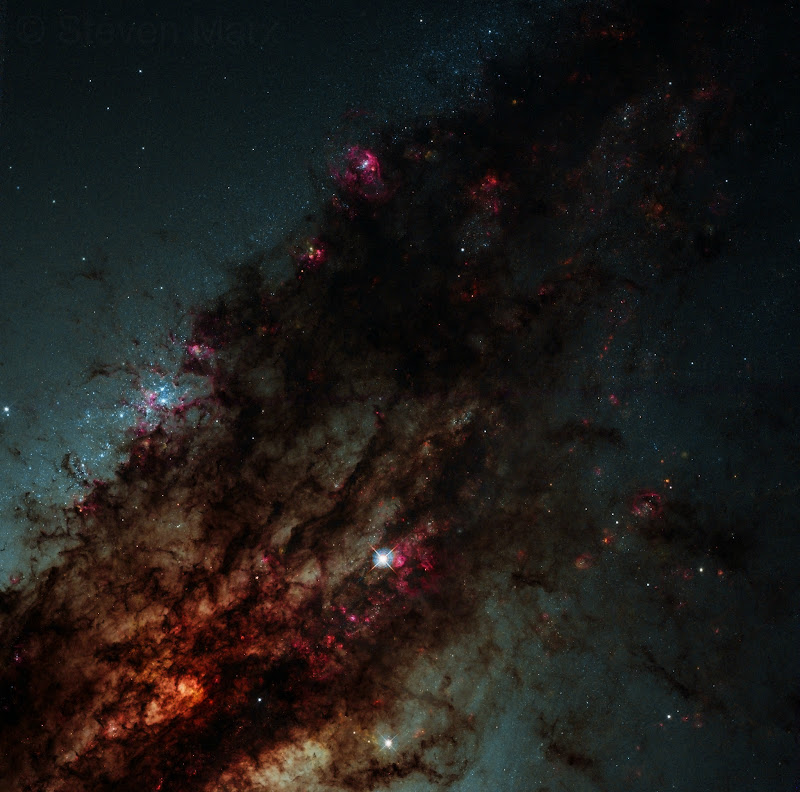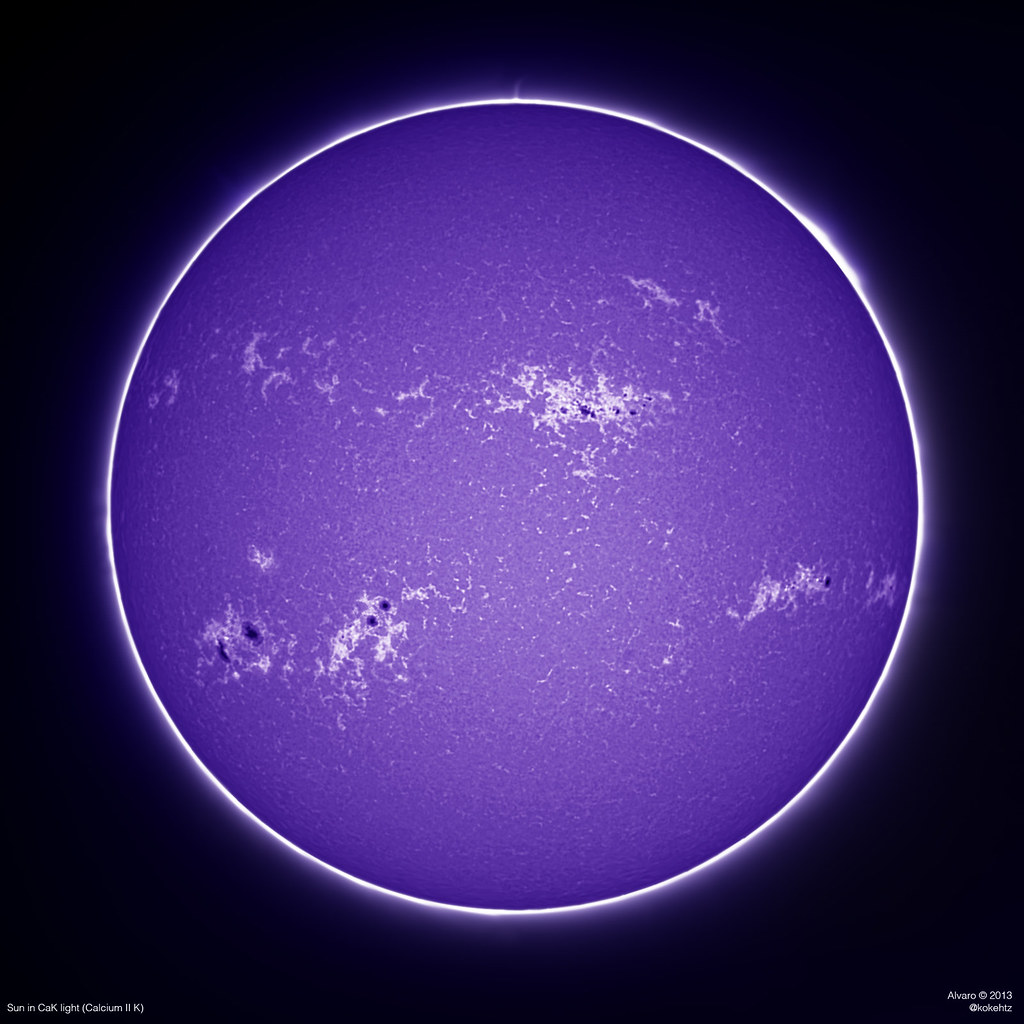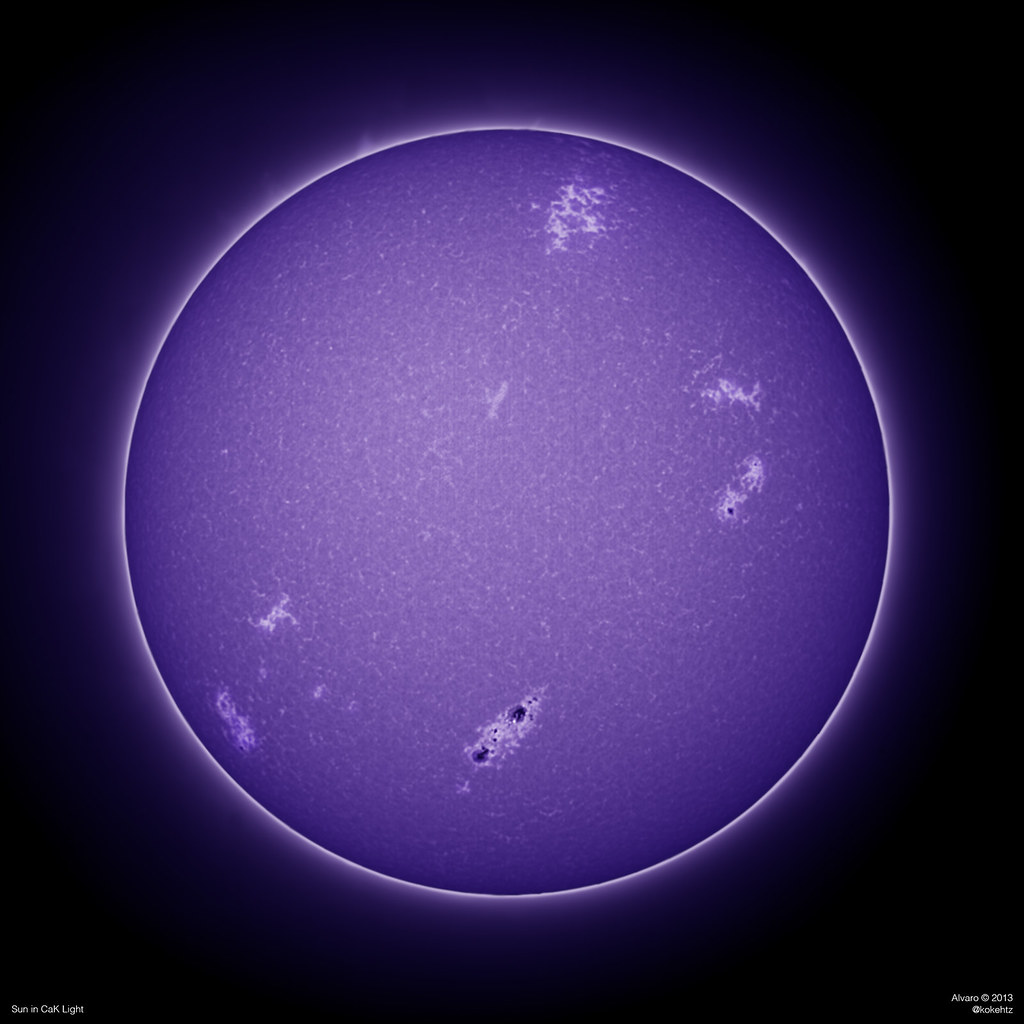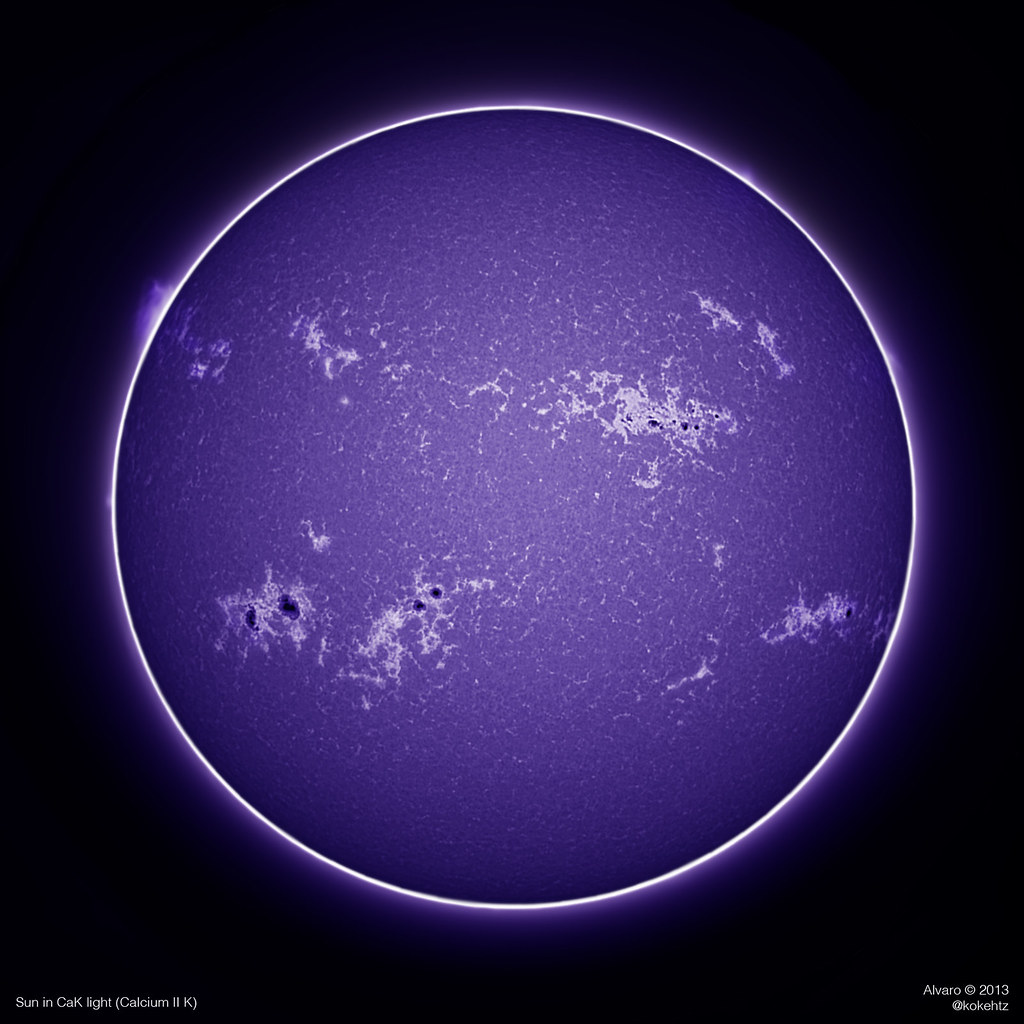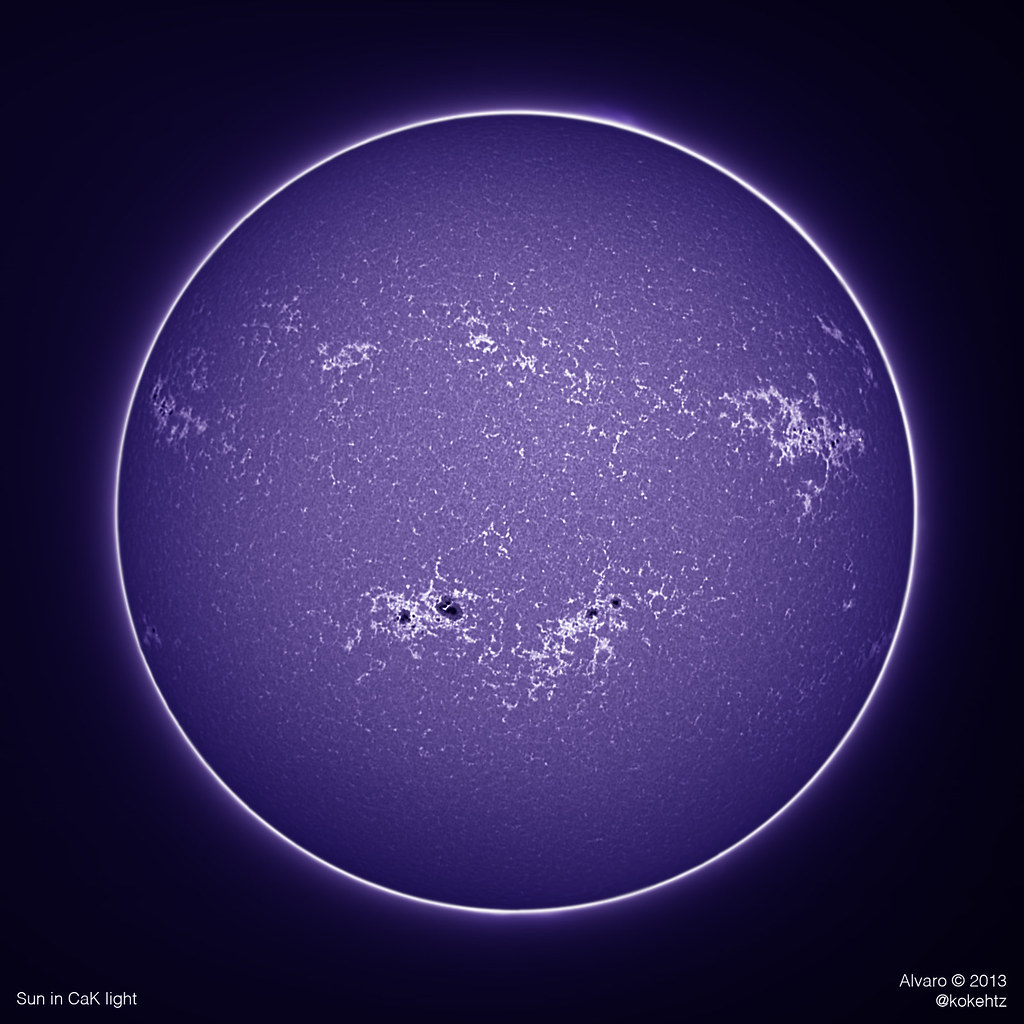Submissions: 2013 May
Submissions: 2013 May
__________________________________________________________________________________________________
Please post your images here.
Please see this thread before posting images; posting images demonstrates your agreement with
the possible uses for your image.
Please keep images under 400K, whether hotlinked or uploaded.
Thank you!
_________________________________________________________________________________________________
<- Previous submissions
[c]«« Discuss Anything in Astronomy «» Visit The Asterisk Main Page «» See Introductory Astonomy Lectures »»
«« Introduce Yourself «» Please Read the Rules »»[/c]
Object: MESSIER 51 - Whirlpool Galaxy - 12 January 2005
FITS data obtained from Hubble Legacy Archive (HLA).
Processing by: Steven Marx Click to view Original FULL scale image (11550x7630)
Please post your images here.
Please see this thread before posting images; posting images demonstrates your agreement with
the possible uses for your image.
Please keep images under 400K, whether hotlinked or uploaded.
Thank you!
_________________________________________________________________________________________________
<- Previous submissions
[c]«« Discuss Anything in Astronomy «» Visit The Asterisk Main Page «» See Introductory Astonomy Lectures »»
«« Introduce Yourself «» Please Read the Rules »»[/c]
Object: MESSIER 51 - Whirlpool Galaxy - 12 January 2005
FITS data obtained from Hubble Legacy Archive (HLA).
Processing by: Steven Marx Click to view Original FULL scale image (11550x7630)
Last edited by owlice on Wed May 01, 2013 5:07 pm, edited 1 time in total.
Reason: Added header
Reason: Added header
Re: Submissions: 2013 May
Object: NGC 5128 - Centaurus A - 6 January 2010
FITS data obtained from Hubble Legacy Archive (HLA).
Processing by: Steven Marx Click to view Original FULL scale image (3978x3938)
FITS data obtained from Hubble Legacy Archive (HLA).
Processing by: Steven Marx Click to view Original FULL scale image (3978x3938)
-
kokehtz
- Ensign
- Posts: 50
- Joined: Sun Mar 17, 2013 11:49 pm
- AKA: AIP
- Location: Madrid, Spain
- Contact:
Re: Submissions: 2013 May
Sun in CaK light (Calcium II K)
Copyright: Álvaro Ibáñez Pérez
Web: http://www.flickr.com/photos/kokehtz
Full resolution: http://farm9.staticflickr.com/8396/8699 ... 9ade_h.jpg
Full resolution: http://farm9.staticflickr.com/8124/8672 ... e7f1_h.jpg
Full resolution: http://farm9.staticflickr.com/8118/8674 ... 9b67_h.jpg
Light from singly-ionized calcium ions in the Sun's upper photosphere and chromosphere (up to 2000 km altitude). Because the blue Calcium K Line (393.3 nm) is sensitive to magnetic fields, magnetically active structures show up in high contrast against the surrounding chromosphere. Places where moderate magnetic fields exist show up bright whereas images of high magnetic fields are dark.
In this CaK image, you typically see brightness along the edges of large convection cells called supergranules and in areas called plages. Dark sunspots are also visible.
Spots on the sun are areas of high magnetic field which appear dark to their surroundings (5,800K) due to their cooler temperature of around 3000-3500K. Spots consist of a dark central region (umbra) and are surrounded by an annular region of dark and bright filaments called the penumbra. Within a developing active region (sunspot
group) tiny spots form initially without a developed penumbra and are called pores. These are usually relatively short lived or can develop a penumbra and become a fully developed spot.
The chromosphere is a place of high solar activity. In the course of a few minutes we can observe changes in the ejecta and prominences, in the path of the filaments, and as matter flows following very characteristic arches. Chromosphere is also visible in the light emitted by the ionized calcium, in the violet part of the solar spectrum in a wavelength of 393.4 nm. This light comes from calcium atoms that have lost an electron.
__________________________________________________________________________________________________________
Details of ISS flying over Madrid, Spain
Copyright: Álvaro Ibáñez Pérez
Web: http://www.flickr.com/photos/kokehtz/
Dobson 250/1250 + Barlow 2x + IR/UV Cut + Canon 550D.
FULL resolution: http://farm9.staticflickr.com/8253/8683 ... a28_h.jpg
Copyright: Álvaro Ibáñez Pérez
Web: http://www.flickr.com/photos/kokehtz
Full resolution: http://farm9.staticflickr.com/8396/8699 ... 9ade_h.jpg
Full resolution: http://farm9.staticflickr.com/8124/8672 ... e7f1_h.jpg
Full resolution: http://farm9.staticflickr.com/8118/8674 ... 9b67_h.jpg
Light from singly-ionized calcium ions in the Sun's upper photosphere and chromosphere (up to 2000 km altitude). Because the blue Calcium K Line (393.3 nm) is sensitive to magnetic fields, magnetically active structures show up in high contrast against the surrounding chromosphere. Places where moderate magnetic fields exist show up bright whereas images of high magnetic fields are dark.
In this CaK image, you typically see brightness along the edges of large convection cells called supergranules and in areas called plages. Dark sunspots are also visible.
Spots on the sun are areas of high magnetic field which appear dark to their surroundings (5,800K) due to their cooler temperature of around 3000-3500K. Spots consist of a dark central region (umbra) and are surrounded by an annular region of dark and bright filaments called the penumbra. Within a developing active region (sunspot
group) tiny spots form initially without a developed penumbra and are called pores. These are usually relatively short lived or can develop a penumbra and become a fully developed spot.
The chromosphere is a place of high solar activity. In the course of a few minutes we can observe changes in the ejecta and prominences, in the path of the filaments, and as matter flows following very characteristic arches. Chromosphere is also visible in the light emitted by the ionized calcium, in the violet part of the solar spectrum in a wavelength of 393.4 nm. This light comes from calcium atoms that have lost an electron.
__________________________________________________________________________________________________________
Details of ISS flying over Madrid, Spain
Copyright: Álvaro Ibáñez Pérez
Web: http://www.flickr.com/photos/kokehtz/
Dobson 250/1250 + Barlow 2x + IR/UV Cut + Canon 550D.
FULL resolution: http://farm9.staticflickr.com/8253/8683 ... a28_h.jpg
-
Lorenzo Comolli
- Ensign
- Posts: 86
- Joined: Sat Mar 05, 2011 9:18 pm
- Location: Italy
- Contact:
Re: Submissions: 2013 May
Large Magellanic Cloud (LMC) - 6 panes mosaic
Authors and copyright: processing: Lorenzo Comolli. Images by: Lorenzo Comolli, Luigi Fontana, Giosuè Ghioldi, Emmanuele Sordini.
Web: http://www.astrosurf.com/comolli/d144.htm (with mouse over for object names)
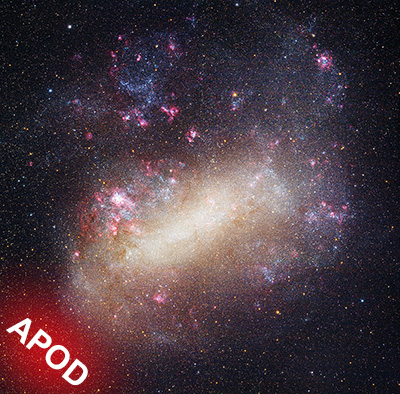
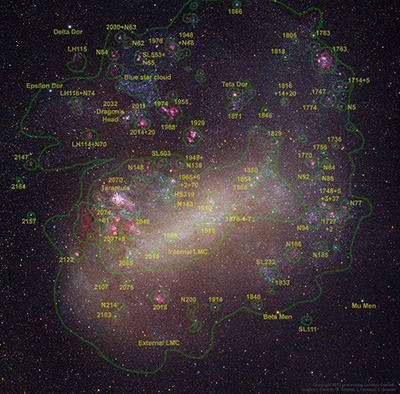
Highres here: http://www.astrosurf.com/comolli/d144m.jpg
Authors and copyright: processing: Lorenzo Comolli. Images by: Lorenzo Comolli, Luigi Fontana, Giosuè Ghioldi, Emmanuele Sordini.
Web: http://www.astrosurf.com/comolli/d144.htm (with mouse over for object names)


Highres here: http://www.astrosurf.com/comolli/d144m.jpg
Last edited by bystander on Fri May 03, 2013 10:39 pm, edited 2 times in total.
Re: Submissions: 2013 May
-
IanP
- Science Officer
- Posts: 135
- Joined: Fri Jan 06, 2012 5:21 am
- Location: Perth, Western Australia
- Contact:
Magnificent full-Moon over Perth's CBD
Magnificent full-Moon over Perth's CBD, March 2013
Higher Res:
http://westcoastpics23.blogspot.com.au/?view=flipcard
Higher Res:
http://westcoastpics23.blogspot.com.au/?view=flipcard
- Sergio
- Friendly Neighborhood Astrophotographer
- Posts: 100
- Joined: Mon Aug 29, 2011 5:26 pm
- Location: Buenos Aires, Argentina
- Contact:
Re: Submissions: 2013 May
IC 4604 in Ophiuchus
Rho Ophiuchi is a triple star system located at the southern end of the constellation Ophiuchus near de limit with Scorpius. The stars are embedded in a large blue reflection nebulosity catalogued as IC 4604 which is mixed with several filaments of dark nebulae. This region is also part of a larger dust and nebulosity region known as the Rho Ophiuchus / Antares complex.
More information and higher resolution at
http://www.baskies.com.ar/PHOTOS/IC%204604%20LRGB.htm
Cheers to all !!
Sergio
Rho Ophiuchi is a triple star system located at the southern end of the constellation Ophiuchus near de limit with Scorpius. The stars are embedded in a large blue reflection nebulosity catalogued as IC 4604 which is mixed with several filaments of dark nebulae. This region is also part of a larger dust and nebulosity region known as the Rho Ophiuchus / Antares complex.
More information and higher resolution at
http://www.baskies.com.ar/PHOTOS/IC%204604%20LRGB.htm
Cheers to all !!
Sergio
Re: Submissions: 2013 May
Artistic Representation
Copyright: Larry Landolfi
[attachment=5]72 dpi_5.jpg[/attachment]
Eta Carinae Nebula
Copyright: Terry Robison
[attachment=3]EtaCarina_15Hours_April_2013_Small.jpg[/attachment]
Galaxy Grouping in Ursa Major
http://www.martinpughastrophotography.id.au/
Copyright: Martin Pugh
http://www.martinpughastrophotography.i ... HaLRGB.jpg
[attachment=2]NGC3718_HaLRGB.jpg[/attachment]
Omega Centauri NGC5139
Copyright: Roberto Colombari
http://www.mediafire.com/convkey/ba13/t ... h7z5fg.jpg
[attachment=1]t9cxtwf7u8uh7z5fg.jpg[/attachment]
NGC7635
http://www.colorsofyesterday.org/
Copyright: François Chevenet
http://www.colorsofyesterday.org/NGC763 ... 1-sRVB.jpg
[attachment=0]LRVB-1-sRVB.jpg[/attachment]
Moon Halo in Desert
Copyright: Majid Ghohroodi
[attachment=4]apod.jpg[/attachment]
Death Valley Dreamlapse 2
SunchaserPictures.com
Copyright: Gavin Heffernan
Copyright: Larry Landolfi
[attachment=5]72 dpi_5.jpg[/attachment]
Eta Carinae Nebula
Copyright: Terry Robison
[attachment=3]EtaCarina_15Hours_April_2013_Small.jpg[/attachment]
Galaxy Grouping in Ursa Major
http://www.martinpughastrophotography.id.au/
Copyright: Martin Pugh
http://www.martinpughastrophotography.i ... HaLRGB.jpg
[attachment=2]NGC3718_HaLRGB.jpg[/attachment]
Omega Centauri NGC5139
Copyright: Roberto Colombari
http://www.mediafire.com/convkey/ba13/t ... h7z5fg.jpg
[attachment=1]t9cxtwf7u8uh7z5fg.jpg[/attachment]
NGC7635
http://www.colorsofyesterday.org/
Copyright: François Chevenet
http://www.colorsofyesterday.org/NGC763 ... 1-sRVB.jpg
[attachment=0]LRVB-1-sRVB.jpg[/attachment]
Moon Halo in Desert
Copyright: Majid Ghohroodi
[attachment=4]apod.jpg[/attachment]
Death Valley Dreamlapse 2
SunchaserPictures.com
Copyright: Gavin Heffernan
Re: Submissions: 2013 May
Sh2-290 in Cancer
Copyright: Jon Talbot
Dim Planetary Nebula Sh2-290 imaged with RGB, Ha and OII filters.
Higher res image available here: http://www.starscapeimaging.com/page110/index.html
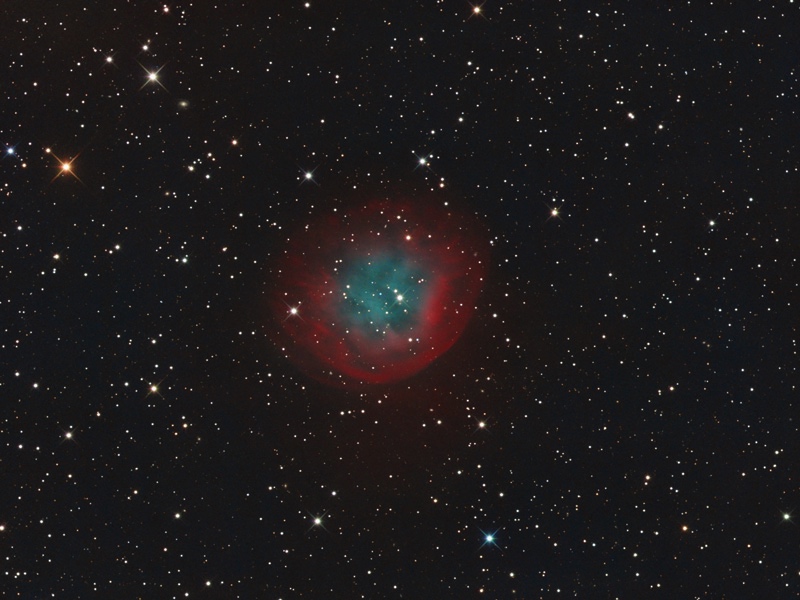
best,
Jon Talbot
Copyright: Jon Talbot
Dim Planetary Nebula Sh2-290 imaged with RGB, Ha and OII filters.
Higher res image available here: http://www.starscapeimaging.com/page110/index.html

best,
Jon Talbot
-
ftherrmann
- Science Officer
- Posts: 141
- Joined: Sun Jan 30, 2011 2:56 am
Re: Submissions: 2013 May
Ghost of Jupiter
http://fth.bounceme.net/
Copyright: Hubble Legacy Archive, Processing-Fred Herrmann
http://fth.bounceme.net/
Copyright: Hubble Legacy Archive, Processing-Fred Herrmann
-
kokehtz
- Ensign
- Posts: 50
- Joined: Sun Mar 17, 2013 11:49 pm
- AKA: AIP
- Location: Madrid, Spain
- Contact:
Re: Submissions: 2013 May
Sun in CaK light (Calcium II K)
Copyright: Álvaro Ibáñez Pérez
Web: http://www.flickr.com/photos/kokehtz
Full resolution: http://farm9.staticflickr.com/8128/8700 ... 2723_h.jpg
Copyright: Álvaro Ibáñez Pérez
Web: http://www.flickr.com/photos/kokehtz
Full resolution: http://farm9.staticflickr.com/8128/8700 ... 2723_h.jpg
-
Bi2L
- Science Officer
- Posts: 103
- Joined: Tue Jul 19, 2011 11:24 am
- AKA: Bill Metallinos
- Location: Corfu, Greece
- Contact:
Re: Submissions: 2013 May
Sunrise Corfu
Canon eos 40D
SW ED80 600mm
f7.5
iso100
Canon eos 40D
SW ED80 600mm
f7.5
iso100
- marion165
- Science Officer
- Posts: 117
- Joined: Fri Oct 21, 2011 6:27 pm
- Location: Lancaster, PA USA
- Contact:
Re: Submissions: 2013 May
A Mid-Winter Night's Dream
http://www.flickr.com/photos/radicalret ... 702110446/
Copyright: Marion Haligowski
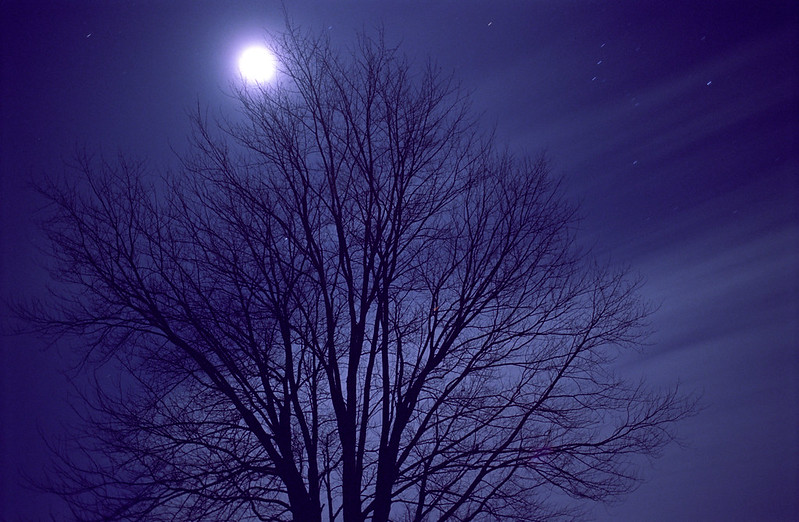
A Mid-Winter Night's Dream by Radical Retinoscopy, on Flickr
A five minute exposure was taken of Orion rising above a barren tree on a Winter night in central Pennsylvania. The photo was taken using a Minolta SRT-101 and a Rokkor 28 mm f/2.8 lens. Kodak Portra 100T (tungsten) film was used.
http://www.flickr.com/photos/radicalret ... 702110446/
Copyright: Marion Haligowski

A Mid-Winter Night's Dream by Radical Retinoscopy, on Flickr
A five minute exposure was taken of Orion rising above a barren tree on a Winter night in central Pennsylvania. The photo was taken using a Minolta SRT-101 and a Rokkor 28 mm f/2.8 lens. Kodak Portra 100T (tungsten) film was used.
-
VisualUniverse
- Asternaut
- Posts: 3
- Joined: Thu May 02, 2013 2:26 pm
Re: Submissions: 2013 May
Star Trails and low earth flash over the 3RF Comanche Springs Astronomy Campus Observatory.
equip: Canon 5D Mark III with Canon EOS 16-35mm f/2.8L II lens
photographer: Phillip L. Jones
Link to 1200 pixel wide photo: http://www.visualuniverse.org/star-trails-dome.shtml
Link to 2200 pixel wide photo: http://www.visualuniverse.org/linkoff/s ... dome.shtml
equip: Canon 5D Mark III with Canon EOS 16-35mm f/2.8L II lens
photographer: Phillip L. Jones
Link to 1200 pixel wide photo: http://www.visualuniverse.org/star-trails-dome.shtml
Link to 2200 pixel wide photo: http://www.visualuniverse.org/linkoff/s ... dome.shtml
Re: Submissions: 2013 May
Aurora borealis near Kiiminki, Finland
Copyright: Thomas Kast
The Northern lights were a result of a fast-moving CME hitting Earths magnetic field.
Equipment: Nikon D700, 14-24mm, exposure time 1.3s, ISO 2500
Bigger resolution available if needed.

http://www.salamapaja.fi/photos/i-5MPbD ... bDVK-L.jpg
Copyright: Thomas Kast
The Northern lights were a result of a fast-moving CME hitting Earths magnetic field.
Equipment: Nikon D700, 14-24mm, exposure time 1.3s, ISO 2500
Bigger resolution available if needed.

http://www.salamapaja.fi/photos/i-5MPbD ... bDVK-L.jpg
Re: Submissions: 2013 May
Partial lunar eclipse
Copyright: Petr Horálek
Mosaic of April partial lunar eclipse - first and last shot is approximatelly 75 minutes from mid-eclipse (penubral phase), central mosaic is made from shots captured every 2 minutes. Central image is from the maximum of eclipse (20:07 UT). The orange color of right part of mosaic is caused by low Moon above horizon.
Copyright: Petr Horálek
Mosaic of April partial lunar eclipse - first and last shot is approximatelly 75 minutes from mid-eclipse (penubral phase), central mosaic is made from shots captured every 2 minutes. Central image is from the maximum of eclipse (20:07 UT). The orange color of right part of mosaic is caused by low Moon above horizon.
Re: Submissions: 2013 May
Hi! this is Saturn taken with my C11 at f45 and dmk21au618
http://imageshack.us/a/img27/2812/satur ... 55irrg.png Full size: http://www.astrobin.com/full/40732/0/?mod=none&real=
http://imageshack.us/a/img27/2812/satur ... 55irrg.png Full size: http://www.astrobin.com/full/40732/0/?mod=none&real=
Last edited by bystander on Fri May 03, 2013 2:09 pm, edited 1 time in total.
Reason: please, no hot links to images > 400kb (file size) attached .jpg version
Reason: please, no hot links to images > 400kb (file size) attached .jpg version
-
francescodib
- Ensign
- Posts: 33
- Joined: Fri May 03, 2013 9:03 am
- Location: Trinitapoli - 76015 - Italy
Re: Submissions: 2013 May
ISS in color
Copyright: Francesco di Biase - Italy - Private Observatory
https://dl.dropboxusercontent.com/u/157 ... S_full.jpg
Copyright: Francesco di Biase - Italy - Private Observatory
https://dl.dropboxusercontent.com/u/157 ... S_full.jpg
Last edited by bystander on Fri May 03, 2013 2:05 pm, edited 1 time in total.
Reason: please, no hot links to images > 400kb (file size)
Reason: please, no hot links to images > 400kb (file size)
Re: Submissions: 2013 May
Re: Submissions: 2013 May
The Lagoon Nebula - Infrared and Optical Comparison
http://www.rolfolsenastrophotography.com
Copyright: Rolf Wahl Olsen Link to large infrared image (4 MB)
Link to large optical image (3.7 MB)
This infrared image of the Lagoon nebula contrasts heavily with traditional images taken in visible light. Such images primarily display the striking magenta colour from glowing Hydrogen gas, as well as large dark obscuring clouds of dust.
The infrared part of the spectrum penetrates these clouds better and reveals complex details and thousands of young stars that are otherwise completely invisible. These stars shine primarily in the infrared and appear as golden red in this image. Only a minority of these are visible in traditional optical images.
To create the infrared image I used a special NIR filter. Effectively the band observed is 700-1100nm since the sillicon CCD chip is not responsive to wavelengths longer than that, and this band is called NIR (Near Infrared). One issue arising from this technique is that the NIR band does not have a colour as such, since it lies outside the visible light spectrum. So to create a colour image from the NIR data I have developed a colour stacking technique which has produced promising results so far.
I use the NIR filter together with G and B filters to create a colour composite. The resulting images are assigned to the different channels as NIR->Luminance, NIR->Red, G->Green and B->Blue.
Substituting the R channel with NIR nicely brings out the contrast between the nebula itself and all the young obscured stars that shine primarily in infrared. This colour image is then overlaid with the NIR frame used as luminousity.
The result is a predominantly blue nebula, but with the areas that are bright in NIR showing as distinctly golden red which highlights the features that are visible in the NIR band and at the same time produces a visually very pleasing image. I have used this technique on a couple of different nebulae and am very happy with the results.
Here are links to some other images:
Rolf
http://www.rolfolsenastrophotography.com
Copyright: Rolf Wahl Olsen Link to large infrared image (4 MB)
Link to large optical image (3.7 MB)
This infrared image of the Lagoon nebula contrasts heavily with traditional images taken in visible light. Such images primarily display the striking magenta colour from glowing Hydrogen gas, as well as large dark obscuring clouds of dust.
The infrared part of the spectrum penetrates these clouds better and reveals complex details and thousands of young stars that are otherwise completely invisible. These stars shine primarily in the infrared and appear as golden red in this image. Only a minority of these are visible in traditional optical images.
To create the infrared image I used a special NIR filter. Effectively the band observed is 700-1100nm since the sillicon CCD chip is not responsive to wavelengths longer than that, and this band is called NIR (Near Infrared). One issue arising from this technique is that the NIR band does not have a colour as such, since it lies outside the visible light spectrum. So to create a colour image from the NIR data I have developed a colour stacking technique which has produced promising results so far.
I use the NIR filter together with G and B filters to create a colour composite. The resulting images are assigned to the different channels as NIR->Luminance, NIR->Red, G->Green and B->Blue.
Substituting the R channel with NIR nicely brings out the contrast between the nebula itself and all the young obscured stars that shine primarily in infrared. This colour image is then overlaid with the NIR frame used as luminousity.
The result is a predominantly blue nebula, but with the areas that are bright in NIR showing as distinctly golden red which highlights the features that are visible in the NIR band and at the same time produces a visually very pleasing image. I have used this technique on a couple of different nebulae and am very happy with the results.
Here are links to some other images:
- HD Video tour of the Carina Nebula, comparing Infrared and Optical features
- Image of the Carina Nebula in Infrared
- Image of the Orion Nebula in Infrared
Rolf
-
kokehtz
- Ensign
- Posts: 50
- Joined: Sun Mar 17, 2013 11:49 pm
- AKA: AIP
- Location: Madrid, Spain
- Contact:
Re: Submissions: 2013 May
A purple Sun in CaK light (Calcium II K)
Copyright: Álvaro Ibáñez Pérez
Web: http://www.flickr.com/photos/kokehtz
This is the Sun in CaK light taken with PST CaK, QHY5-II and NEQ6 Pro II.
Regards!
Full resolution: http://farm9.staticflickr.com/8418/8706 ... 024d_h.jpg
Copyright: Álvaro Ibáñez Pérez
Web: http://www.flickr.com/photos/kokehtz
This is the Sun in CaK light taken with PST CaK, QHY5-II and NEQ6 Pro II.
Regards!
Full resolution: http://farm9.staticflickr.com/8418/8706 ... 024d_h.jpg
Re: Submissions: 2013 May
sundog, of A month of color.
-
Randy Shivak
- Ensign
- Posts: 58
- Joined: Sat Oct 22, 2011 6:37 pm
AR1731
This was imaged with my Astro-Physics 152mm and DayStar Quantum PE .5 Angstrom filter and Flea2 video ccd camera. These images were taken 1 hour a part.
Re: Submissions: 2013 May
NGC 1313
http://www.astro-cabinet.com
Copyright: Dieter Willasch NGC 7380 in Cepheus
http://www.atlasastronomia.com/
Copyright: Cesar Blanco
http://www.atlasastronomia.com/astrofot ... 0_2000.jpg
http://www.astro-cabinet.com
Copyright: Dieter Willasch NGC 7380 in Cepheus
http://www.atlasastronomia.com/
Copyright: Cesar Blanco
http://www.atlasastronomia.com/astrofot ... 0_2000.jpg
Re: Submissions: 2013 May
http://www.ried-sternwarte.de
Copyright: Vladimir Rau http://www.ried-sternwarte.de/ngc3628.html
Kind regards,
Vladimir Rau
Copyright: Vladimir Rau http://www.ried-sternwarte.de/ngc3628.html
Kind regards,
Vladimir Rau

